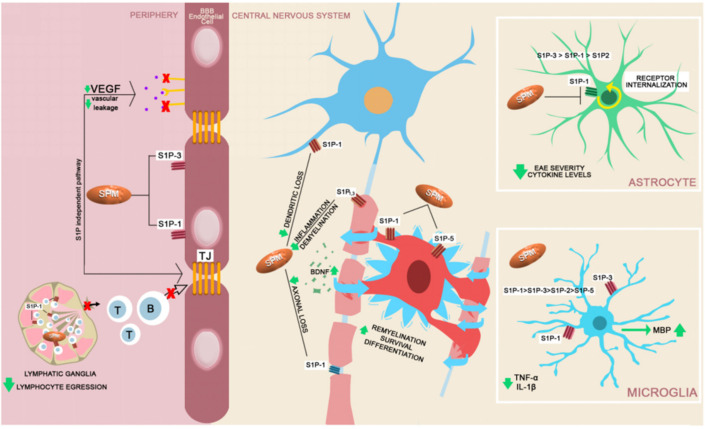Figure 4.
A brief schematic representation of fingolimod’s mechanism of action. In the periphery, fingolimod (sphingosine phosphate receptor modulator–SPM) acts upon the sphingosine 1-phosphate receptors (S1P1, S1P2, S1P3, S1P4, S1P5) [101]. In the lymphatic ganglia, SPM antagonize the S1P1 expression and blocks the lymphocytic egression into the circulation (T and B). SPM blocks the expression of S1P1 and S1P3 on the surface of the endothelial cells, reducing lymphocyte transmigration. Immune cell passage at the level of the BBB is reduced secondary VEGF reduced expression [109,110,111,112]. Inside the CNS the S1P receptors are expressed by the majority of neural cell lineages [113]. S1P1 and S1P5 modulation enhances oligodendrocyte function, survival, differentiation and secondarily boosts the remyelination [114,115]. Neuronal function is directly sustained by modulation of S1P1 and S1P3 receptors and by the up-regulation of BNDF expression, with neuroprotective effects [113,116]. The astrocytes, secondary to S1P1 modulation were proven to decrease EAE severity in murine studies and decrease the levels of proinflammatory cytokines [117,118]. fingolimod and SPM reduce proinflammatory cytokine production from microglia and increase the secretion of myelin basic protein (MBP) after a demyelinating event, promoting remyelination [119,120].

